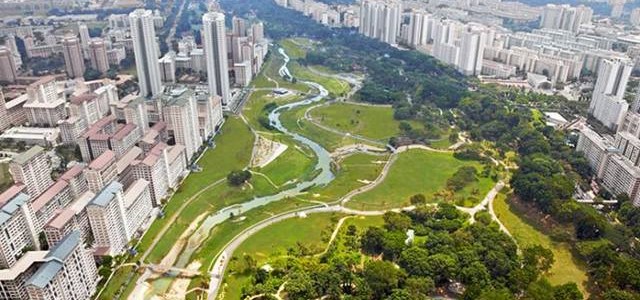At the begining of the webinar, Prof. Zoran Vojinovic from UNESCO IHE (Institute for Hydrological Education, Delft) introduced the definition of nature-based solutions (NBS) and some real-life applications, so that participants would get a better understanding of the concept. He highlighted that NBS are a non-traditional approach to address problems caused by climate change. This concept has been known since the 70s, under the terminology of “low-impact developments” (LIDs), originated in the U.S.A. Other synonyms of NBS are Green Infrastructure (GI), Sustainable Urban drainage systems (SuDS), Ecosystem-based Disaster Risk Reduction (Eco-DRR), and Blue-green-infrastructure (BGI).
The opening presentation was followed by the panel discussion between three experts: Prof. Markus Disse, Chair of Hydrology and River Basin Management of the Technical University of Munich, Dr. Aude Zingraff-Hamed, Chair for Strategic Landscape Planning and Management of the Technical University of Munich and Prof. Zoran Vojinovic, UNESCO Institute for Hydrological Education. They first gave an overview of three renowned projects: PHUSICOS, ProNaHo, and RECONECT, and in the discussion that followed emphasized some of the main elements and synergies between the projects.
The three projects have many common points. They are all trying to find solutions to mitigate climate change-cased hydrometeorological extremes and at the same time, enhancing environmental and social co-benefits of NBS. However, since PHUSICOS is working in rural areas, it has more capacity in space to implement large-scale solutions, in comparison to RECONECT, which focuses on urban areas. ProNaHo is addressing the problem on the river-basin scale.
All three speakers emphasized, that upscaling of the NBS is difficult because there are specificities about the location of the areas that require high efforts in planning. They added that transfer from science to practice can take place both directly, with application of the evaluated NBS measures, and indirectly, with knowledge transfer to other project or to stakeholders. Prof. Vojinovic pointed out that currently there is a high demand for guidelines on planning, design, and implementation of NBS, and that we should join forces trying to achieve this goal.
Different challenges were mentioned regarding the practical implementation of NBS:
- Willingness and awareness of decision-makers and the public is still lacking.
- Insurance systems can be a solution, but at the same time can incentivize maintaining the status-quo (agriculture, re-building, etc.).
- Frameworks for effective multidisciplinary work (hydrologists, biologists, ecologists, social scientists, economists) on NBS are missing.
- We should find a way to incorporate stakeholders' point of view into decision-making.
- Transboundary rivers are still bounded by national legislation.
- We need to find incentives to motivate investments on NBS (e.g., business-models, public-private partnerships, etc.).
It was emphasized that NBS implementation is only one of the solutions to manage flood risk, and that a plan B should always be available in case the NBS do not have the capacity to mitigate all types of flood events. Also, NBS for flood risk management require a high amount of space.
In his closing remarks, Prof. Disse called for additional efforts to enhance willingness, governance schemes, and developing funding options to implement NBS.
The 2nd Danube Floodplain Webinar is part of a webinar series (1st webinar outcomes) organized within the Interreg Danube Floodplain project. The 3rd Webinar is due at the end of November and will focus on the newly accessible data portal Danube Floodplain GIS (DFGIS). For the date, topic and speakers please check our project’s website: http://www.interreg-danube.eu/danube-floodplain.
